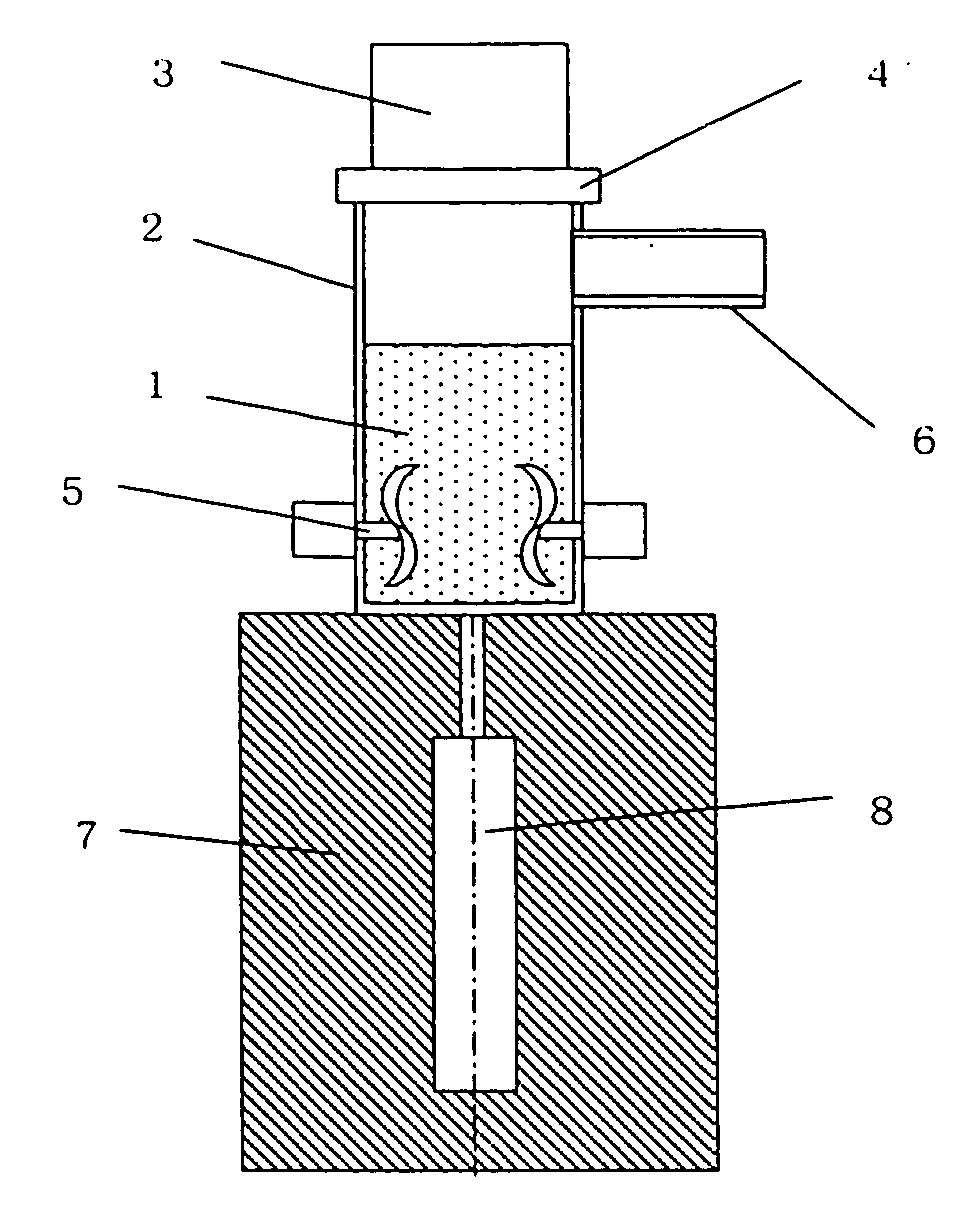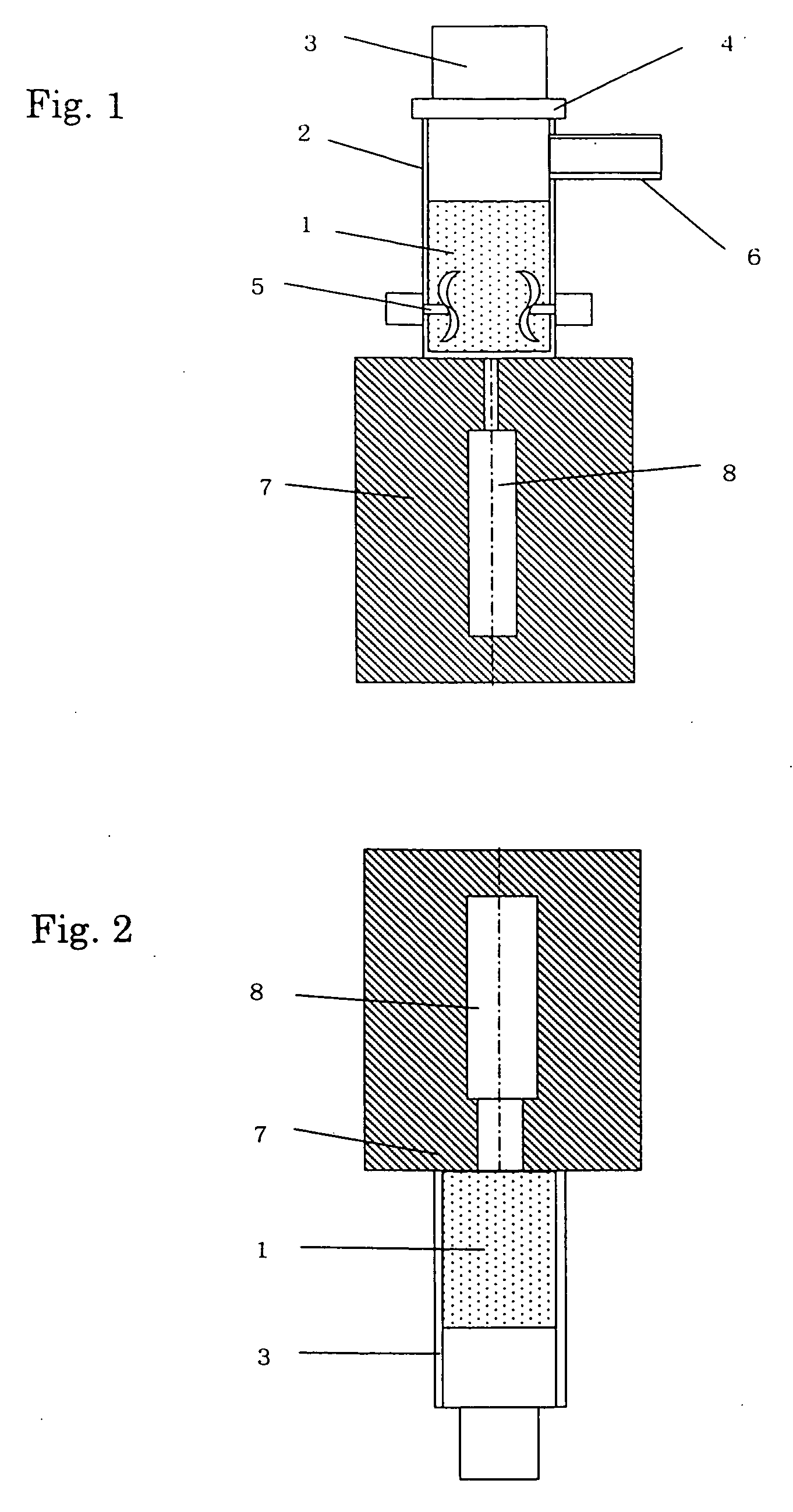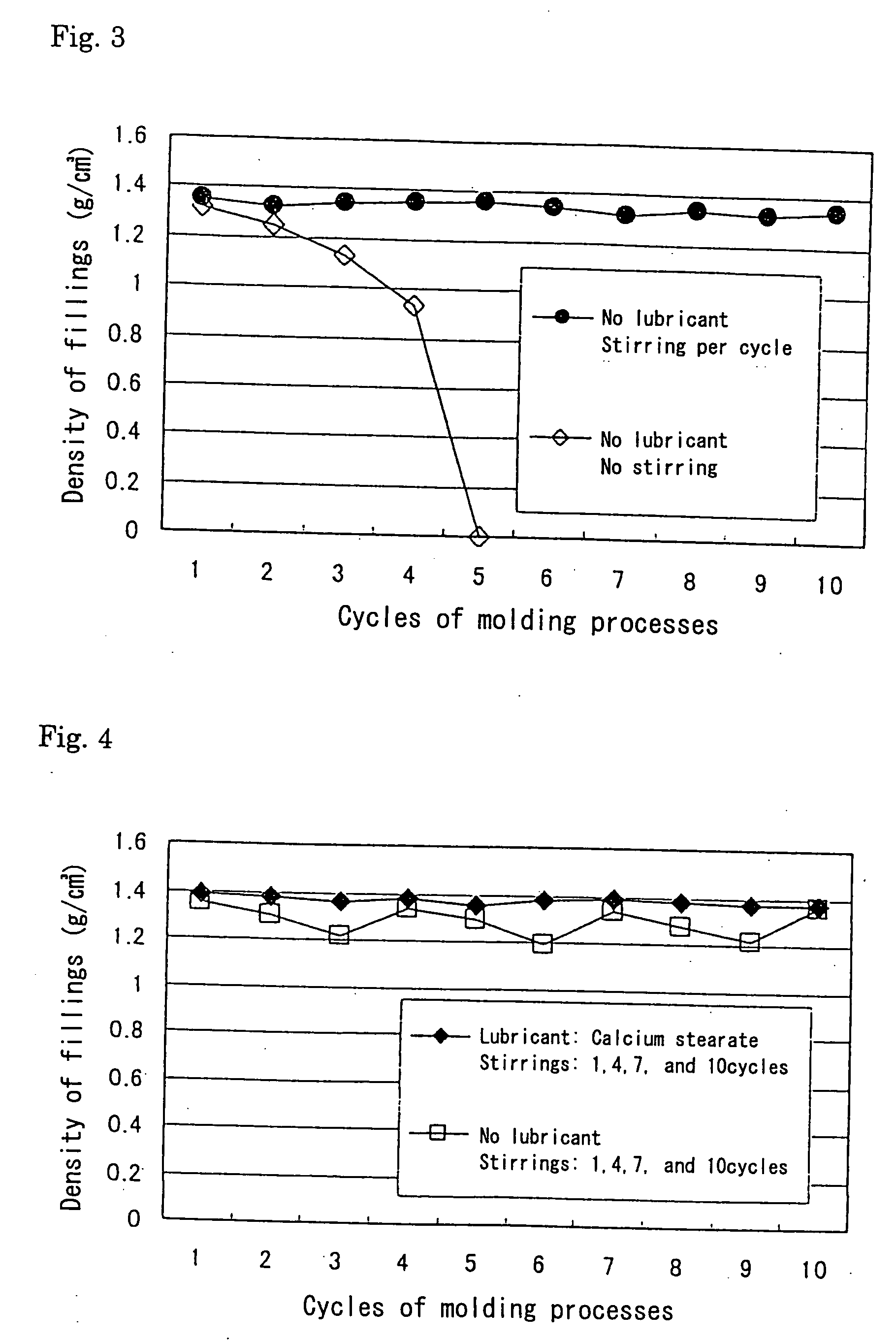Dry aggregate mixture, method of foundry molding using dry aggregate mixture and casting core
a technology of dry aggregate and dry aggregate, which is applied in the direction of moulding machines, foundry patterns, and moulding apparatus, etc., can solve the problems of core mold being easily removed from the cooled and solidified molten metal, insufficient volatilization or decomposition of resin-binders, and voids within the poured molten metal, so as to ensure the single-grain structure of the mixture and maintain the effect of the single-grain structur
- Summary
- Abstract
- Description
- Claims
- Application Information
AI Technical Summary
Benefits of technology
Problems solved by technology
Method used
Image
Examples
first embodiment
The First Embodiment
[0136] A dry mixture of an aggregate material is prepared in line with the first preparation (1). This dry mixture comprises the following components:
[0137] 100 wt % of silica sand (flattery sand); 0.4 wt % of polyvinyl alcohols R-2105 and R-1130 (each of which is a polyvinyl alcohol derivative containing a silanol group; the R-2105 has a low viscosity, while the R-1130 has a high viscosity); and
[0138] 0.8 wt % of polyvinyl alcohols PVA 105 and PVA 124 (both of which are completely suspended polyvinyl alcohols that are made by Kuraray Co., Ltd, Japan; the PVA 105 has a low viscosity, while the PVA 124 has a high viscosity).
[0139] Water of 6 wt % is added to and mixed with 100 wt % of the dry mixture. The dry mixture with the additional water is then mixed by means of a mixer in a temperature-controlled freezer at about −30° C. to freeze and cure the mixture such that it has single-grained structures. In connection with FIG. 1, about 500 grams of the resultant ...
second embodiment
The Second Embodiment
[0141] A dry mixture of an aggregate material is prepared by the second preparation (2). This dry mixture comprises 100 wt % of silica sand (flattery sand), 0.8 wt % of a polyvinyl alcohol JP-05 (made by Japan VAM & Poval Company), and 0.34 wt % of a butane-tetra-carboxylic acid (Rikashid BT-W, made by New Japan Chemical Company) as a cross-linker. 6 wt % of water is added to and mixed with 100 wt % of the dry mixture. The dry mixture with the additional water is then further mixed, while it is frozen and cured by means of a nitro gas having temperatures lower than −30° C. In connection with FIG. 1, about 500 grams of the resulting mixture are temporarily stored in the blowing head 2, which is pre-cooled by means of a cooled-blast of a nitro gas having a temperature of about −30° C. The temporarily stored mixture is then stirred by the stirring blades 5 operating at about 60 rpm to maintain the single-grained structures in the mixture, under a condition that is ...
third embodiment
The Third Embodiment
[0144] A plurality of molds is molded by repeating the molding process of the second embodiment. In each molding process to mold a respective mold, the stirring blades 5 pre-stir the mixture 1 before each cycle to charge the mixture 1 into the cavity 8. A plurality of comparative molds is molded by repeating a molding process that is similar to that for the above inventive molds, except that this process uses no stirring by the stirring blades 5. FIG. 3 shows the densities measured of the fillings of the inventive molds and the comparative molds in the cavity 8. FIG. 3 indicates that each inventive mold with the pre-stirred mixture has a stable and high density, whereas each comparative mold without the pre-stirring cannot obtain a stable and high density and thus it is an undesirable mold.
PUM
| Property | Measurement | Unit |
|---|---|---|
| Density | aaaaa | aaaaa |
| Percent by mass | aaaaa | aaaaa |
| Percent by mass | aaaaa | aaaaa |
Abstract
Description
Claims
Application Information
 Login to View More
Login to View More - R&D
- Intellectual Property
- Life Sciences
- Materials
- Tech Scout
- Unparalleled Data Quality
- Higher Quality Content
- 60% Fewer Hallucinations
Browse by: Latest US Patents, China's latest patents, Technical Efficacy Thesaurus, Application Domain, Technology Topic, Popular Technical Reports.
© 2025 PatSnap. All rights reserved.Legal|Privacy policy|Modern Slavery Act Transparency Statement|Sitemap|About US| Contact US: help@patsnap.com



